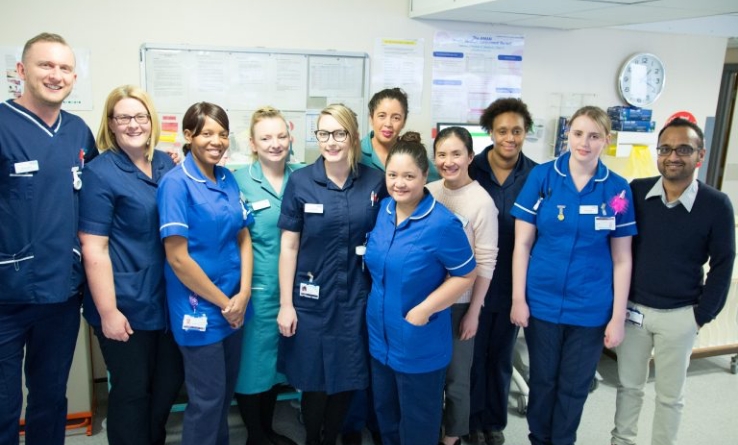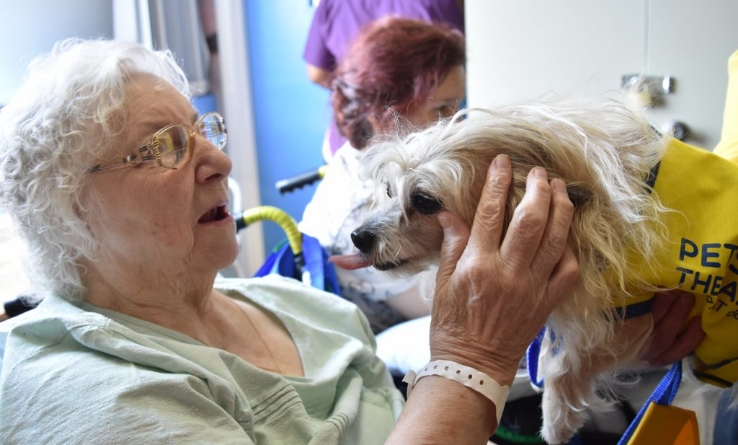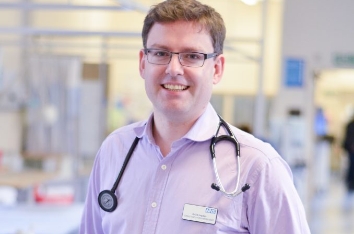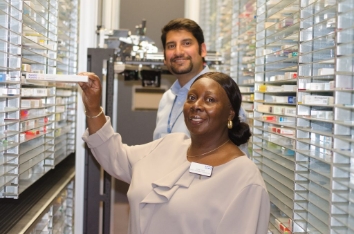Sandwell and West Birmingham NHS Trust is an integrated care organisation. We are dedicated to improving the lives of local people, to maintaining an outstanding reputation for teaching and education, and to embedding innovation and research.
We employ over 8,000 people and spend around £430 million of public money, largely drawn from the Integrated Care Boards (ICBs) which serve the Sandwell and West Birmingham areas. The ICBs and the Trust are responsible for the care of 530,000 local people from across North-West Birmingham and all the towns within Sandwell.
Over the last year:
- 5,795 babies were born at our Trust.
- There were 191,497 patient attendances plus 31,627 attendances seen under GP triage at our emergency departments with over 40,570 people admitted for a hospital stay.
- 44,533 day case procedures were carried out.
- 517,431 patients were seen in our outpatient departments.
- Over 618,000 patients were seen by community staff.

Our teams are committed to providing compassionate, high quality care from the Midland Metropolitan University Hospital in Smethwick, City Health Campus (formerly City Hospital) on Birmingham’s Dudley Road, from Sandwell Health Campus (formerly Sandwell Hospital) in West Bromwich, and from our intermediate care hubs at Rowley Regis and Leasowes in Smethwick.
The Trust includes the Birmingham and Midland Eye Centre (a supra-regional eye hospital), as well as the Pan-Birmingham Gynae-Cancer Centre, our Sickle Cell and Thalassaemia Centre, and the regional base for the National Poisons Information Service.
Inpatient paediatrics, most general surgery, and our stroke specialist centre are located at The Midland Met. We have significant academic departments in cardiology, rheumatology, ophthalmology, and neurology.
Our community teams deliver care across Sandwell providing integrated services in GP practices and at home, and offering both general and specialist home care for adults, in nursing homes and hospice locations.

Committed to public health and local regeneration
We are a key partner in efforts to change the shape of care in our area. Our new hospital – the Midland Metropolitan University Hospital – opened on 6 October and is located on Grove Lane, Smethwick.
Our intention is to provide substantially more care at home and rely less on acute hospitals. Whilst most of the programme involves investment in GP surgeries and health centres, we have relocated our acute care to the Midland Met. The new hospital will act as a major employment opportunity for local people and is part of a wider scheme to develop the area adjacent to the site.
Our training and education team, The Learning Works, are outward facing in sourcing the workforce we need for the long term. We have a very active programme of apprentices and school experience joint working. We are partners in the Sandwell University Technical College. More widely we work closely with Birmingham City University, Wolverhampton University, Birmingham and Aston Universities.
The Trust Board is committed to developing ever more consistent links into our local communities, working with voluntary sector, faith, and grassroots organisations. The development of our governing body and the expansion plans we have for our charitable foundation will also reinforce this work.


Our Values

Ambition

Respect

Compassion
Investing in the future
Over the next decade we will make major investments in three areas: In the skills and training of our workforce; in the technology we use to both care for and communicate with patients and partners; and in our estate – in part through our plan to build the Midland Metropolitan University Hospital to rationalise acute care.


